There are plenty of self-employed people who are creatively and professionally fulfilled by their businesses, despite never achieving million-dollar financials. I am one of them.
Online business is exciting these days. COVID-19 led to an abrupt and permanent market expansion in many digital sectors. Millions of people did some personal and professional navel-gazing during quarantine, and are now more interested in what entrepreneurship might provide.
Data from the U.S. Census Bureau backs this up. New business applications in the U.S. spiked dramatically after COVID-19 arrived and have remained elevated. More people want to be entrepreneurs.
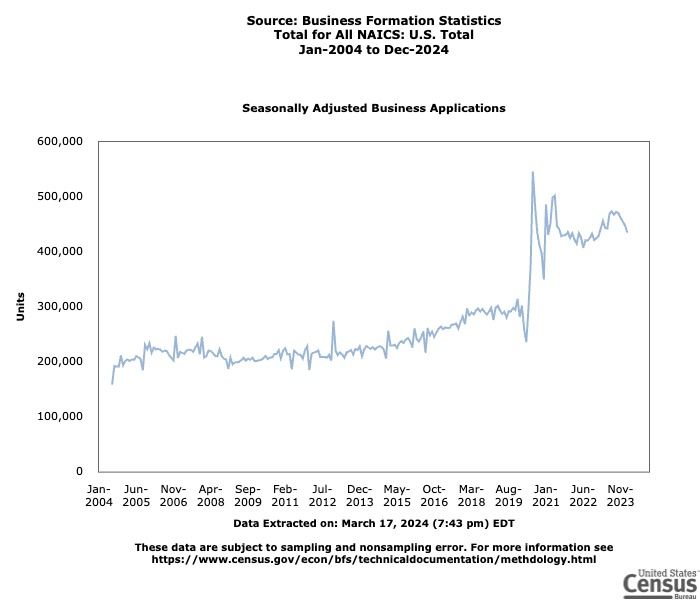
Throngs of coaches, creators and service providers see this uptick in interest. They are poised to pounce on these consumers and sell them a solution.
The most tried-and-true hook in the relatively unregulated world of online business is the success story. There’s no shortage of anecdotes about people – real people, just like you! – getting rich, defying genetics or transforming their life in record time.
- “I did this ONE thing and got to 7 figures!”
- “Do this ONE thing to have clients come in on autopilot…”
- “The riches are in the niches!”
These stories are often one-dimensional in that they focus on one solution or behavior change that made all the difference – a solution the storyteller happens to sell. We often don’t know if the growth was manipulated, or how it may have negatively impacted other areas of someone’s personal life, as there are rarely journalistic checks and balances.
There will always be people who loathe their 9-to-5s and crave freedom, though, so these anecdotes persevere.
We need more up-and-down stories in online business. Entrepreneurship is rarely linear; 2020 was chaos, 2021 was boom season, and recessionary pressures made 2022 and 2023 rather chilly. Some years are up, others are down and pivoting is a normal occurrence.
In this post, I am sharing my LLC's last six years of financial performance. Between screenshots of some revenue and expenses dashboards, I’ll share how my client book and personal priorities changed, along with how I continue to use my LLC in my portfolio career.
Why I Started a Business
Of the more than 32 million businesses in the United States, 81% of them were non-employer firms, meaning they have no employees, and about 27 million of them have just one owner according to the U.S. SBA’s Office of Advocacy.
Not all business formations are well planned. 🙋🏻♂️ I started my marketing and writing consultancy business, Hefty Media Group, in 2016 after watching one too many Gary Vaynerchuk videos. I made an abrupt decision to quit my job and leap into self-employment.
In retrospect, this was a mistake. I hadn’t built any foundation and had to immediately start generating enough revenue to replace my salary. I’m glad I started, though, because business ownership is great.
A business lets you slide into consulting a little or a lot, and you get better tax breaks and perks. My business was (and still is) a single-member LLC, which meant the paperwork and annual tax filings were simpler.
By 2018, I realized I hated tracking receipts and expenses. So I began using Bench, an online bookkeeping service, and haven’t saved a receipt since. Bench is connected to all my accounts, a bookkeeper reconciles my books every month, and I have 1:1 chat and appointment support whenever I need it. There are several services that offer solopreneur bookkeeping; Bench just happened to be the one I went with.
Now let’s look at each of the last six years of my LLC’s financial performance, according to the Bench dashboards.
2018
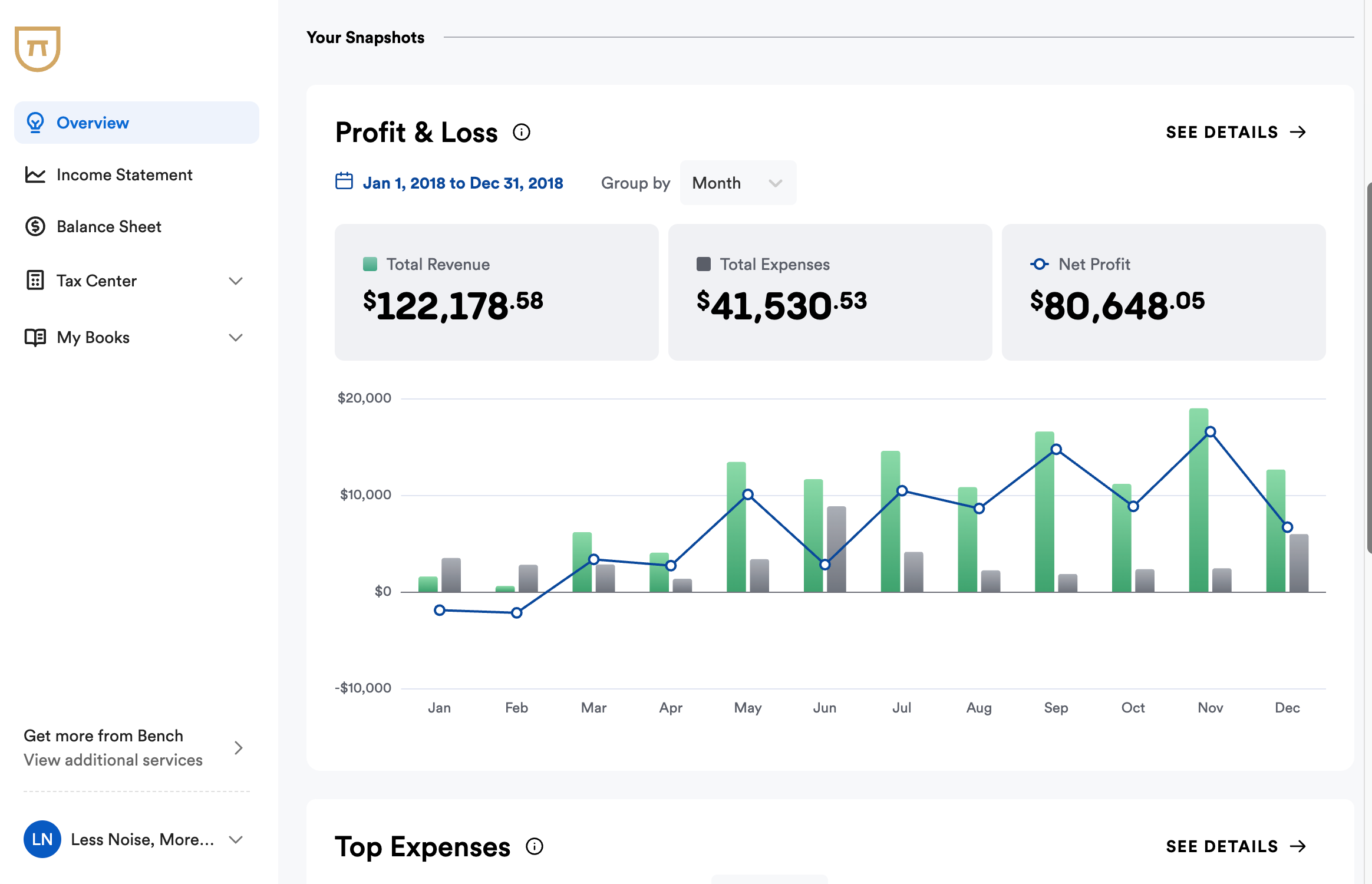
In May of 2018, a part-time client of mine offered to take me full-time. Leaving a W-2 for a 1099 is sometimes a risk, but this move had enough financial upside – a 50% uplift in pay and the opportunity to go 100% remote – that I went for it. The offer had both a retainer and a commission structure, a stability that is sometimes rare.
I left my W-2 job, and this client became my primary source of income for just under two years.
At a glance, I look super profitable. This is because, like many single-member LLC owners, I paid myself in the form of owner draws from net profit. The money that I kept in the business was used to finance things like skill building, marketing, web development and online business programs.
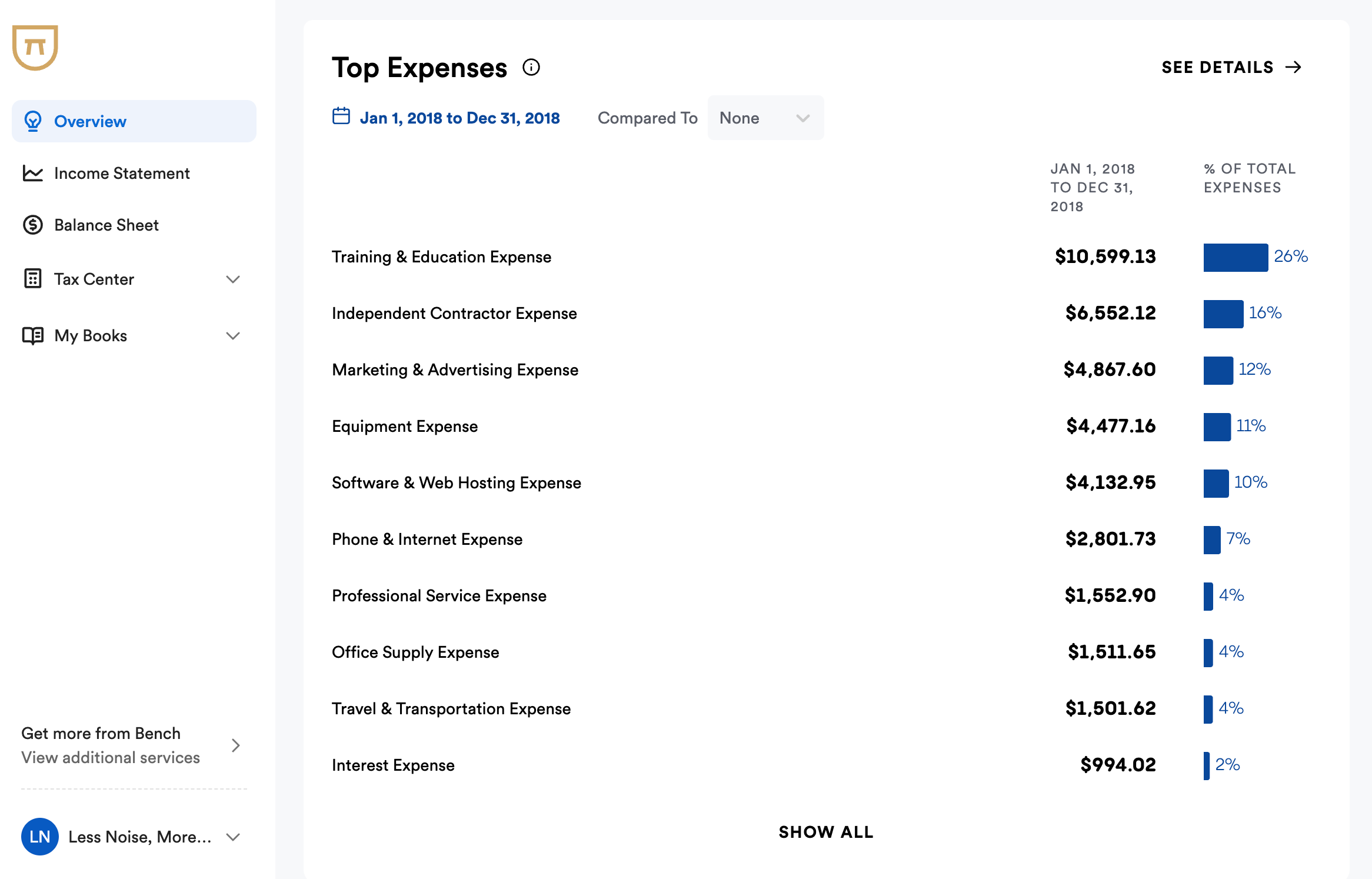
These books could probably be a touch cleaner – all of my “professional services” expenses were independent subcontracting, for example – but compared to 2017, when I wasn’t using a bookkeeper at all, this was a huge improvement.
2019
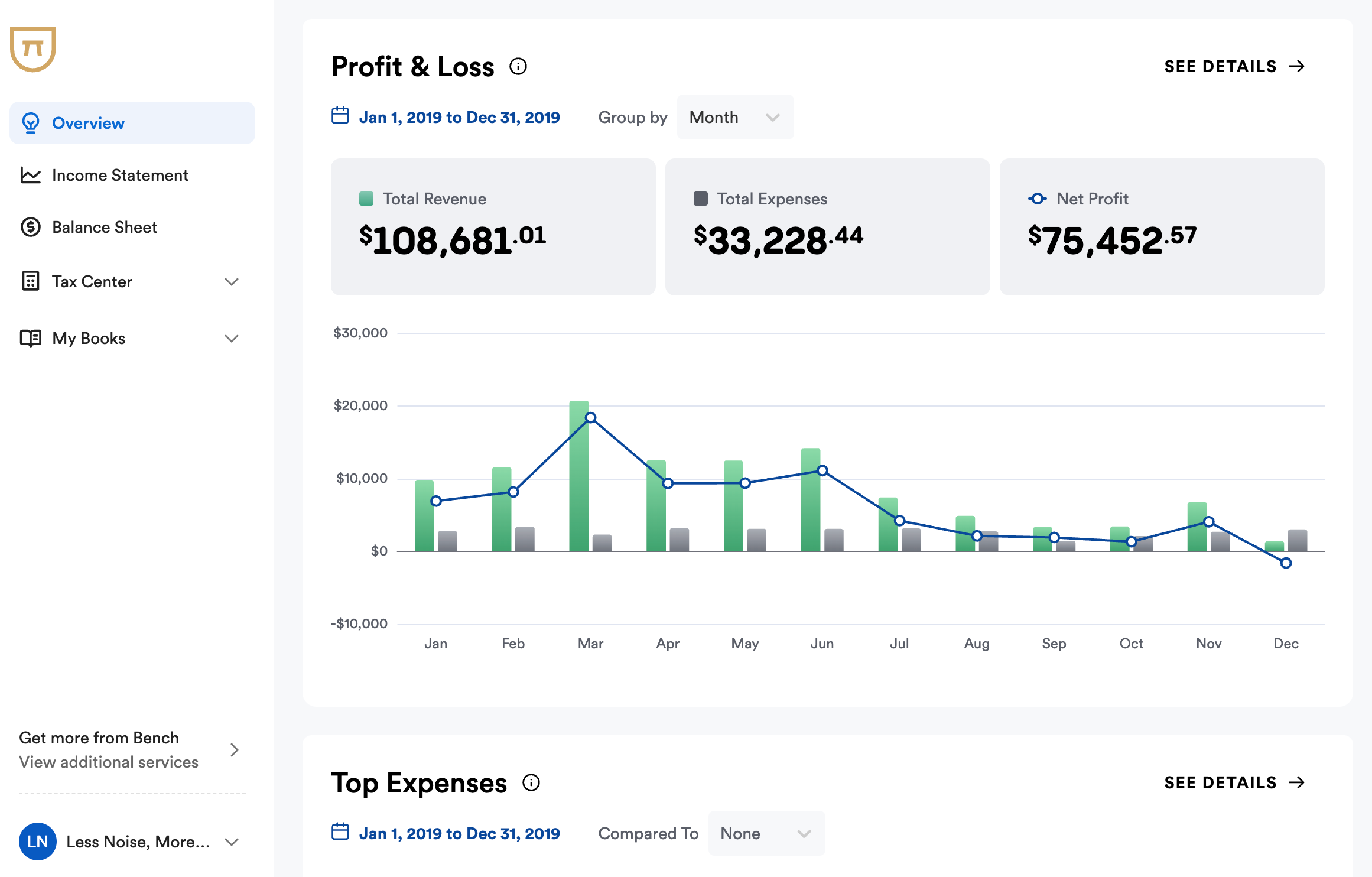
2019 looks like an unbalanced year, but it was actually pretty steady. In July, my full-time client, a growing agency, moved me from 1099 contractor to W-2 employee, an arrangement I remained on for about nine months thereafter.
Revenue looks like it dipped, but since that client had moved me to a W-2, it no longer populated as business revenue.
TIP:Once my client made me a W-2 employee, they were paying me, Nick Wolny, not my business.
I also took a couple side clients during this time. If you have both a W-2 and side clients, it’s important to adhere to all your contract requirements. Clauses like conflict of interest are real, but know that, as long as you’re abiding by the conditions of your employment agreement, your employer can’t stop you from working on the side.
My full-time client wasn’t thrilled that I had other clients, so I pitched an exclusivity bump. This pitch was declined, so I continued to maintain clients on the side to bump up my overall revenue. If an employer or client does try to bully you, request an exclusivity clause, which should include a pay bump since your earning potential is being limited.
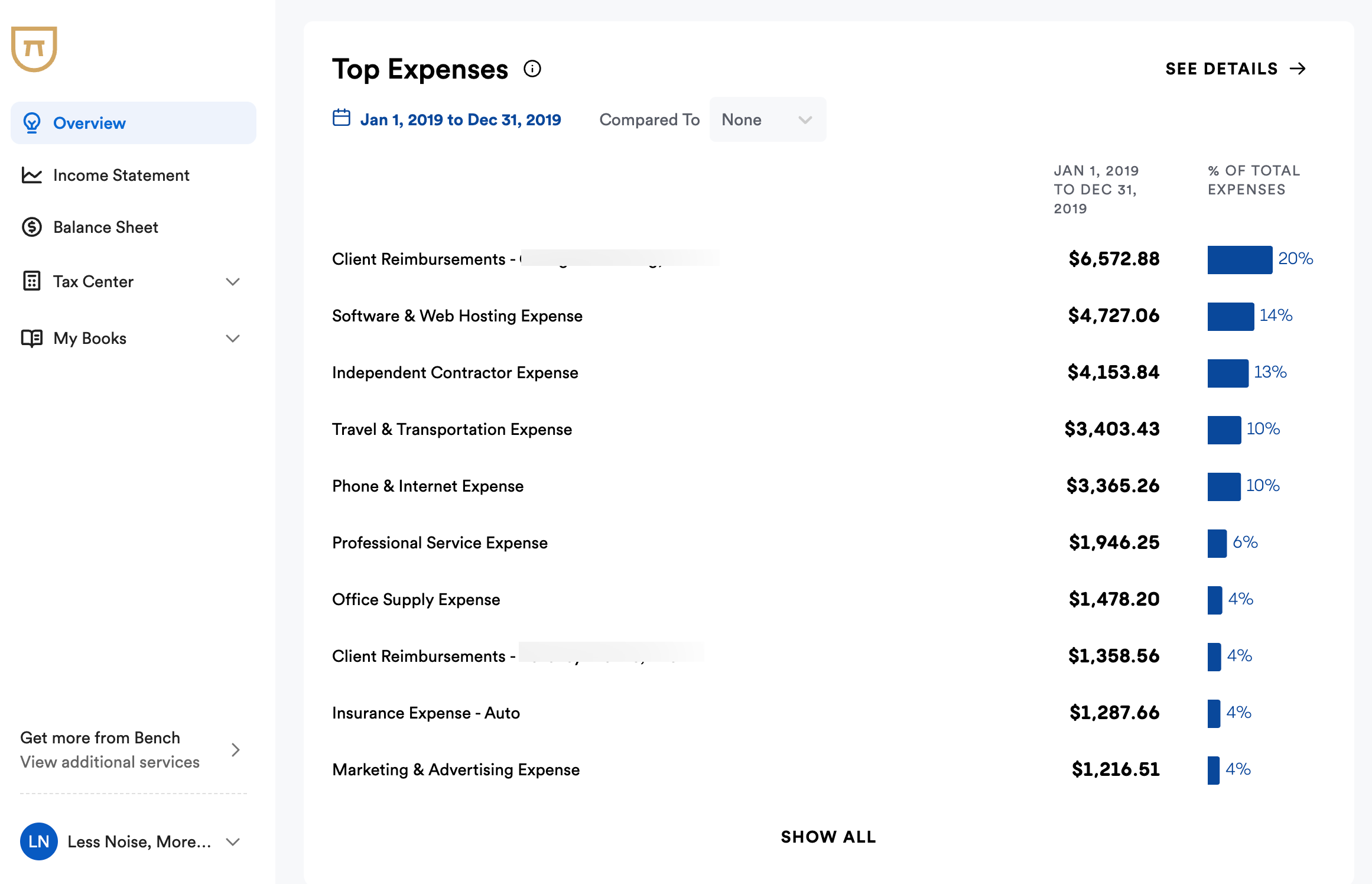
2020
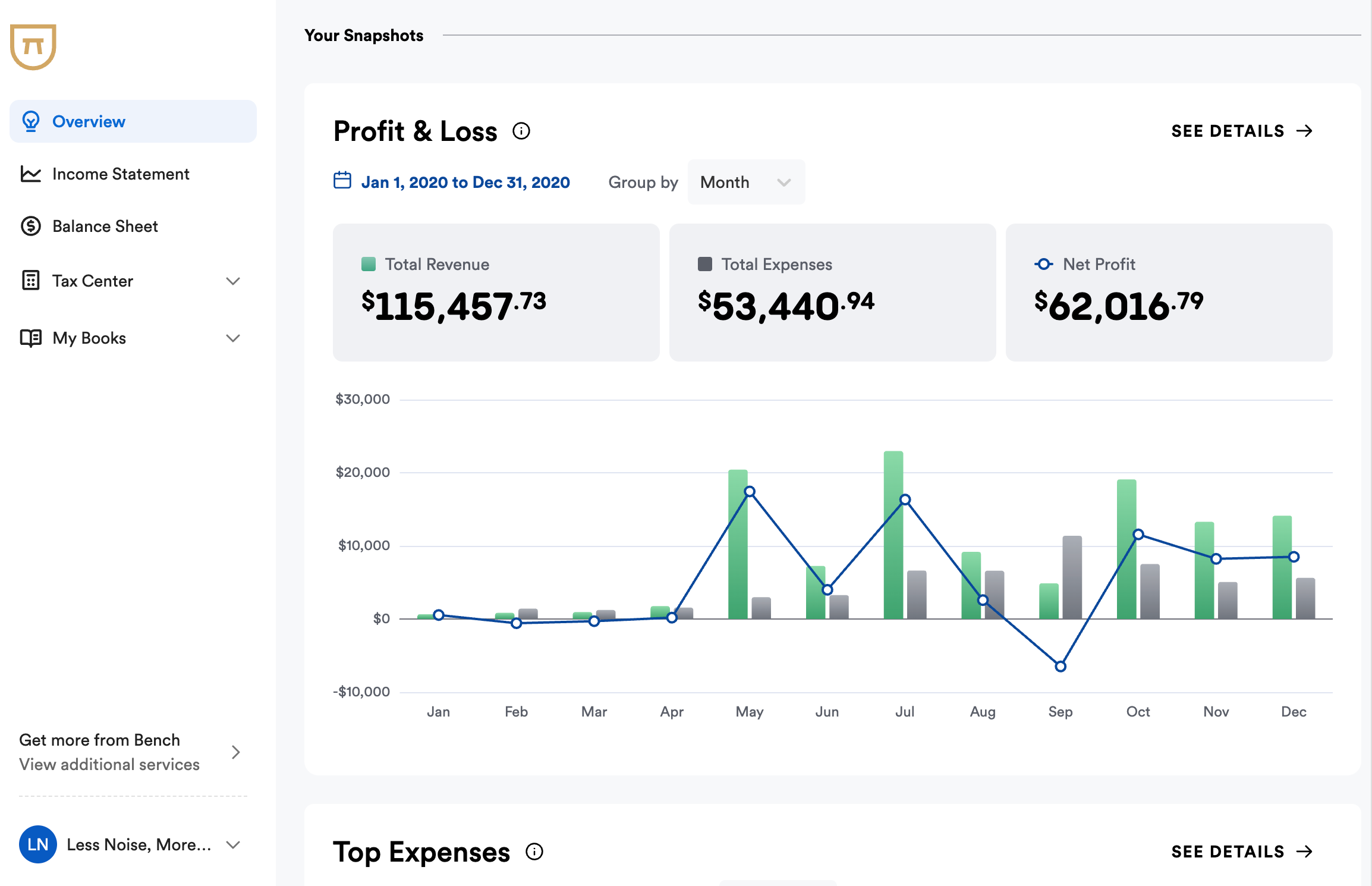
When COVID-19 hit in the first quarter of 2020, my client implemented pay cuts and some furloughs. I was older and smarter now, with a few years of client work under my belt, and decided it was the right time to leave the company and strike back out on my own.
I sold a mix of workshops, programs and done-for-you 1:1 marketing work for clients. This was a tumultuous year for all of us, but those who could offer their services remotely like myself had some flexibility. I played offense for a lot of the year.

2021
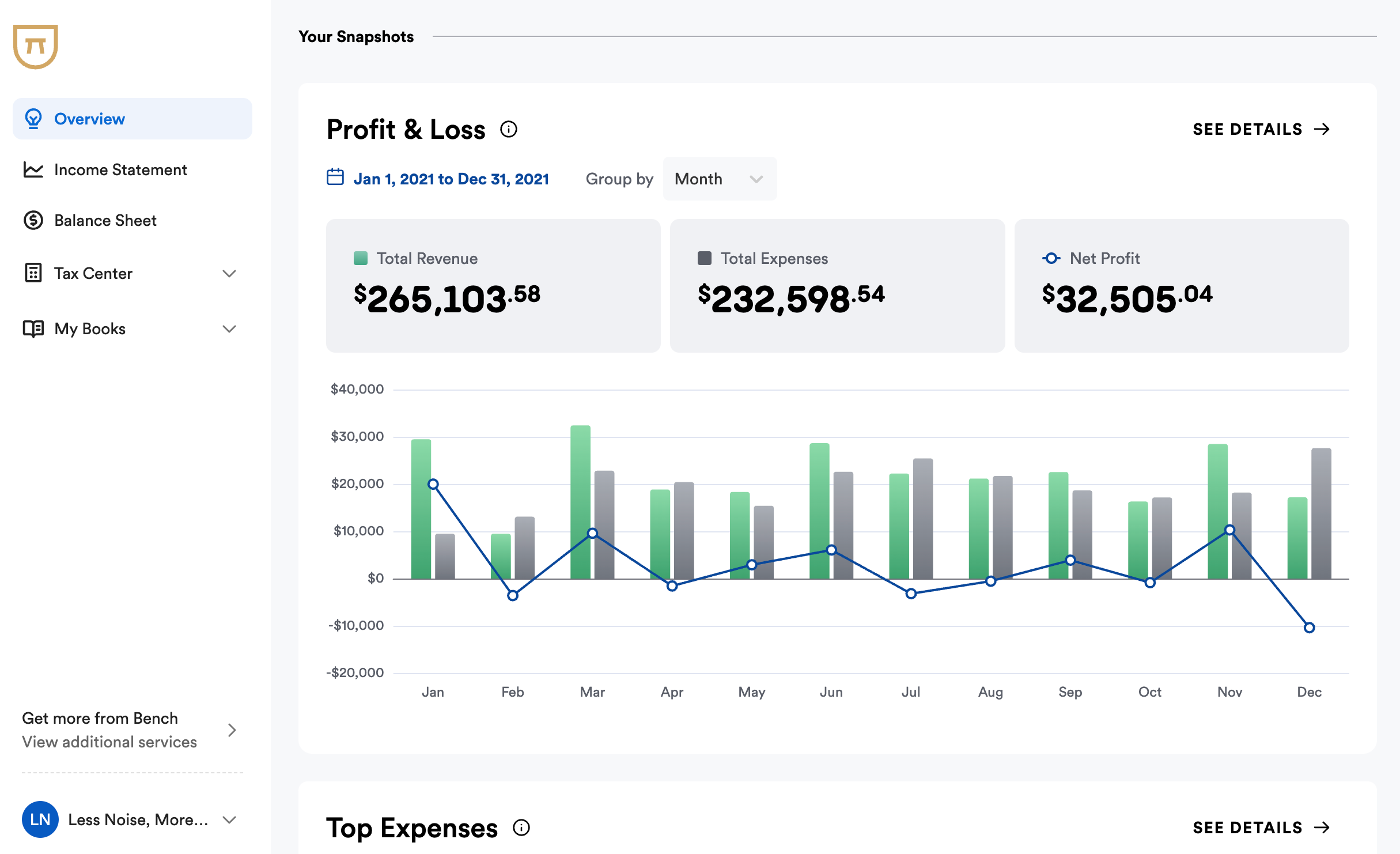
As you can see, several big changes happened in 2021, from operations to strategy to mindset.
First, I changed the tax classification of my business. It’s still a single-member LLC, but it’s now classified as an S corporation. I did this for the tax perks, but there was another, more valuable benefit: Stability. The move to S corp status pushed me to establish a payroll, benefits and a self-employed 401(k) (Guideline) for myself. Getting a steady paycheck and health insurance from my own business was a mindset shift.
I also began making bigger investments in an effort to grow. I hired a full-time employee (and then let them go four months later because I hadn’t laid enough foundation). That sucked. I also made a few uncomfortably large mastermind investments. We’re supposed to “invest in ourselves,” right?
Topline revenue more than doubled. But my non-payroll expenses more than tripled, in addition to my W-2 salary now being a company expense. This is why you have to be cautious about these “I make 6/7/8 figures” people; revenue is only one part of the equation.
My software expenses went up, my contracting expenses up and the grind became real.
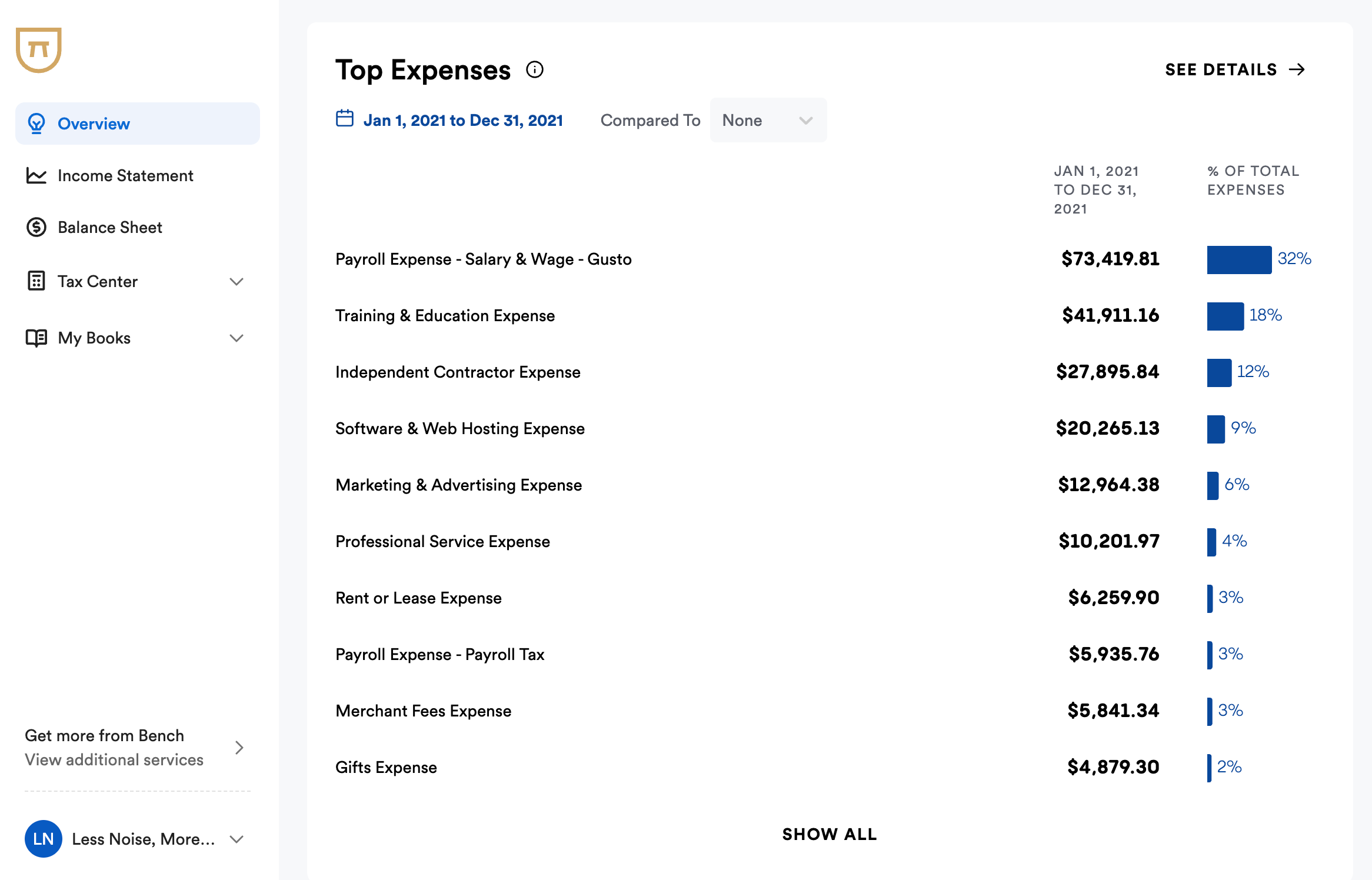
My Injury
What’s not shown in these screenshots is that the pace of scaling before I was ready was driving me toward burnout, both mentally and physically. Since all my clients were sold custom consulting packages, execution required a lot of energy and task-switching. I needed a core offer that was scalable, so I set out to build and launch a flagship offer, Camp Wordsmith®, by the end of the year. It was an exciting business epiphany, so I got to work.
Then came the pain.
A few weeks after filing the trademark and hiring industry partners, though, I injured my back at the gym during a warm-up squat. I felt something slide in my lower spine, and in that moment everything changed. I’d thrown my back out before, but this time was different; I could barely stand and the days stretched into weeks and then months.
An MRI revealed nothing, physical therapy and acupuncture had no effect, and my marijuana usage soared. I kept moving forward with the most exciting launch yet in my business, but in my personal life what I wanted for my career had very much changed. Hustle wasn’t as appealing anymore.
On paper, this year looks amazing. In real life, it was hell.
2022
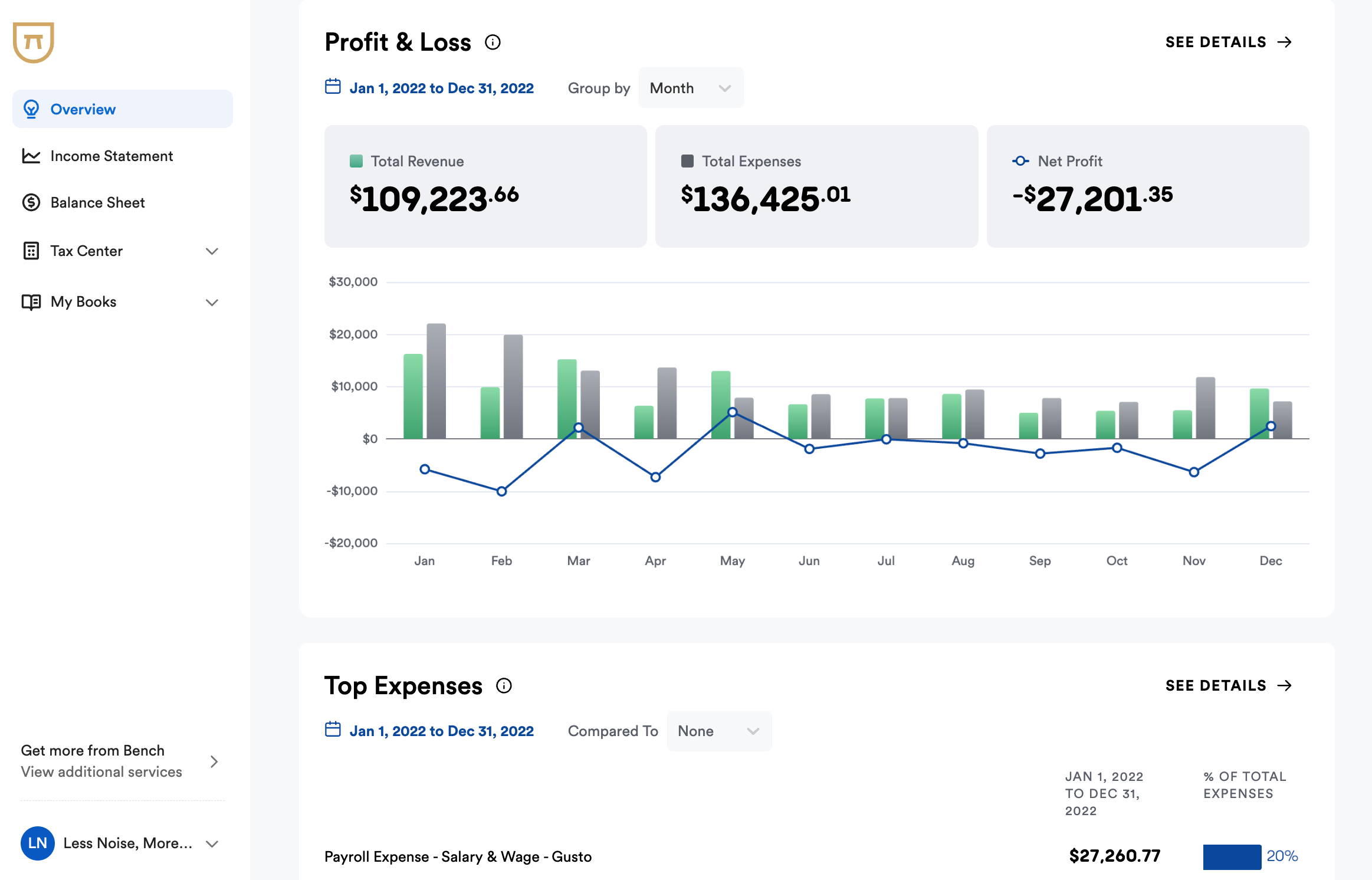
Injuries suck. They’re a drain on your productivity, and self-employment health insurance is exorbitant in the U.S.
2022 was when I took an editor job at Red Ventures, where I am today. For that first year, I was an editor for NextAdvisor, a personal finance partnership with Time magazine, launching a vertical about the financial independence movement. In my business, I kept my client book light and turned down my self-employed pay to part-time.
Revenue dipped a lot, and I didn’t turn expenses down quickly, so I ended in the red for the year.
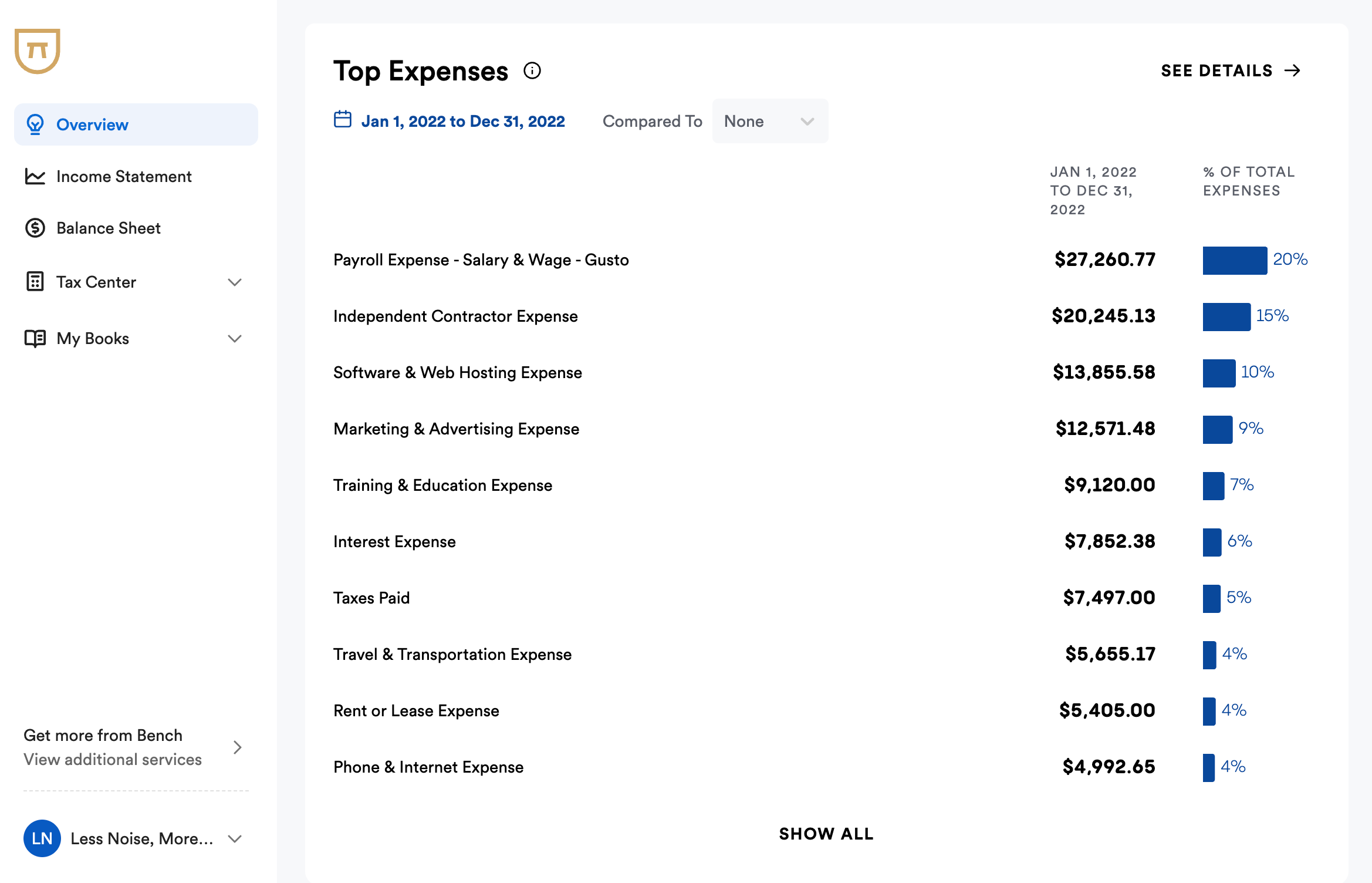
Like any career pivot, my move into journalism was bumpy at first. I had weakness in areas like grammar and syntax, but had strength in other skills like scrappiness and getting shit done. I also discovered I really enjoy journalism. Journalism is writing with purpose and meaning, and has crossovers with many other types of writing.
Inspired by the career shift, I enrolled in night school at UCLA in the fall of 2022, and completed an eight-course certificate in journalism, giving me a better foundation for a career in editorial.
2023
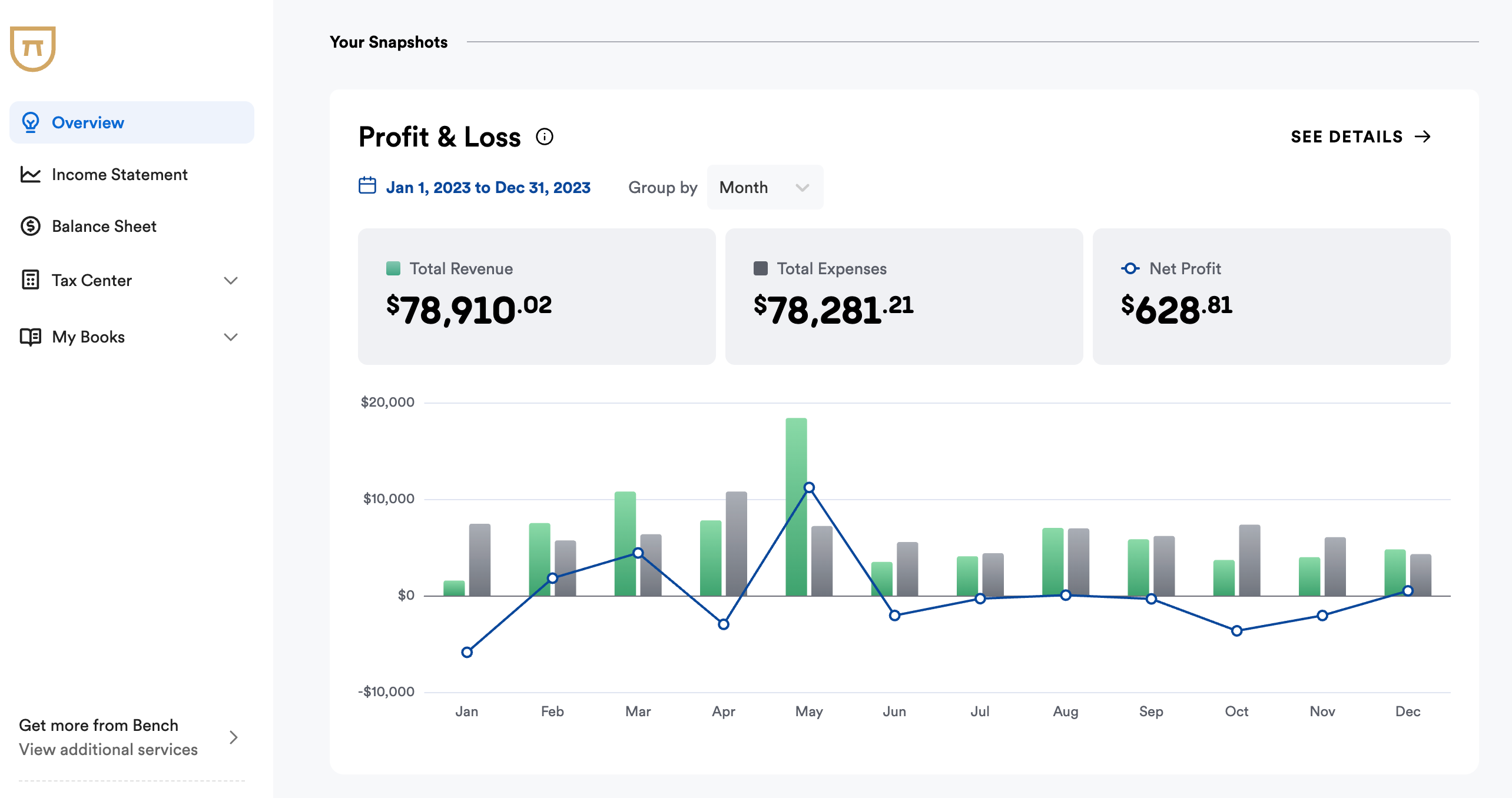
I thought I would be hopping back into full-time consulting quickly when it was announced in January 2023 that NextAdvisor was shutting down. But instead, the parent company moved me to a different media brand, CNET, where I’m at now.
CNET is a more prestigious brand, not just a partnership. But the placement has worked out. My work at CNET is both exciting and busy, so I have less time for other things. I learn on the job, not only from my fellow writers and editors, but also a talented video and social team. I downsized my client book even more, did a few launches, and generally just focused on finding my groove.
For audience growth, I switched from a social-first strategy to a search-first strategy. I focus less on social media and more on my website and newsletter. I’m starting to do the most creative and focused writing of my career, and that is fulfilling.
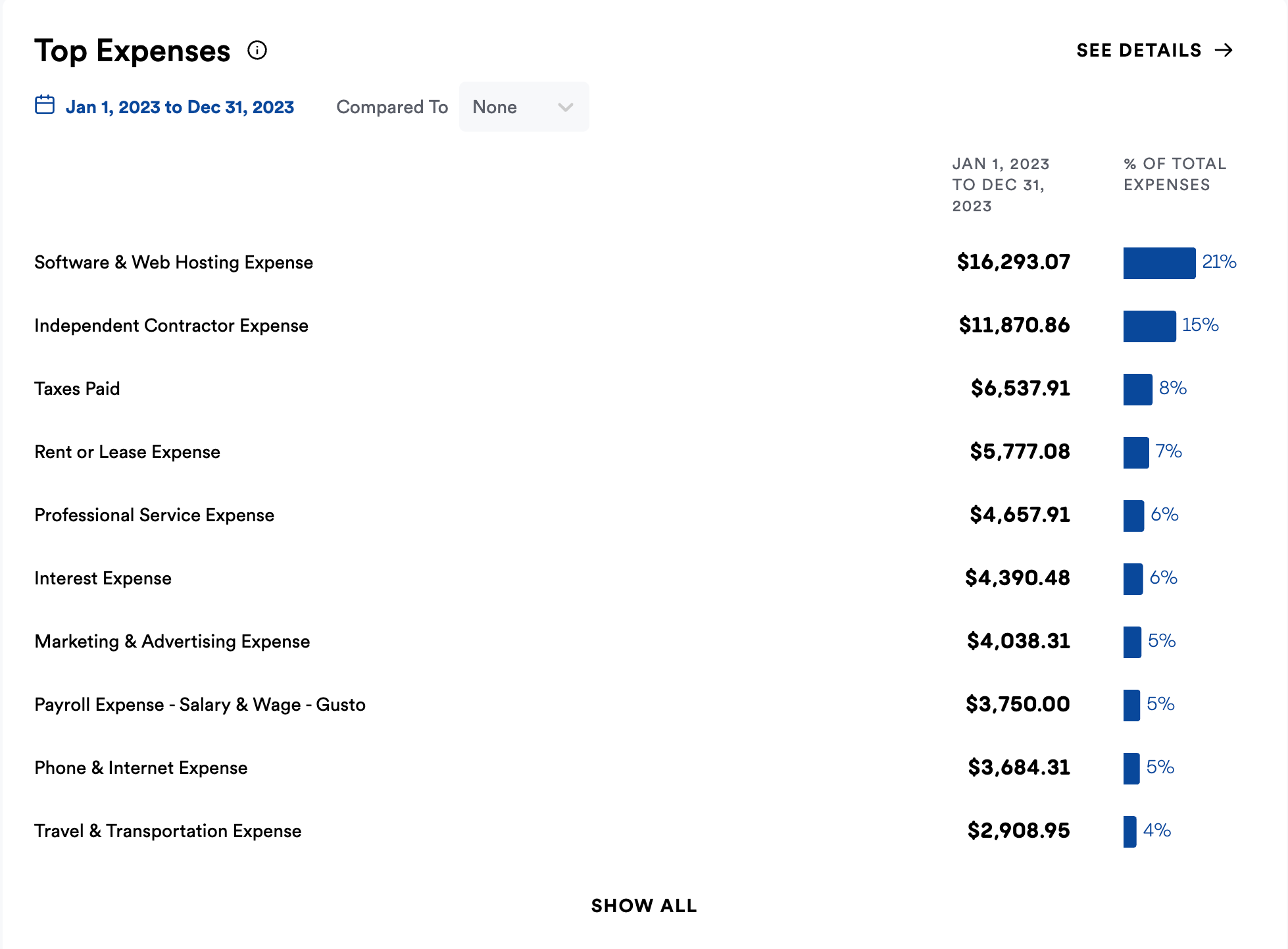
The Takeaway
Online business is rarely linear. Some years are a boom and others are a bust.
Find an approach that not only helps you reach your financial goals, but also one that will keep you inspired and creatively fulfilled no matter what life throws your way. ◆
Thanks For Reading 🙏🏼
Keep up the momentum with one or more of these next steps:
💬 Leave a comment below. Let me know a takeaway or thought you had from this post.
📣 Share this post with your network or a friend. Sharing helps spread the word, and posts are formatted to be both easy to read and easy to curate, with nice image previews. You'll look savvy and informed.
📲 Connect on another platform. I’m currently publishing in these places. If you are too, say hello:
- Medium: Articles and thought essays.
- Threads: Casual, Twitter-esque commentary.
- Instagram: Media appearances, and some occasional IRL posts to Stories.
- TikTok: Occasional video scraps from reporting and life.
- LinkedIn: Buttoned-up posts.
📬 Sign up for my free email list. “The Morning Walk” is a free newsletter about writing, online publishing, and personal entrepreneurship. Learn more and browse past editions here.
🏕 Up your writing game. Camp Wordsmith® is a content marketing strategy program for small business owners, service providers, and online professionals. Learn more here.
📊 Hire me for consulting. I provide 1-on-1 consultations through my company, Hefty Media Group. We're a certified diversity supplier with the National Gay & Lesbian Chamber of Commerce. Learn more here.


